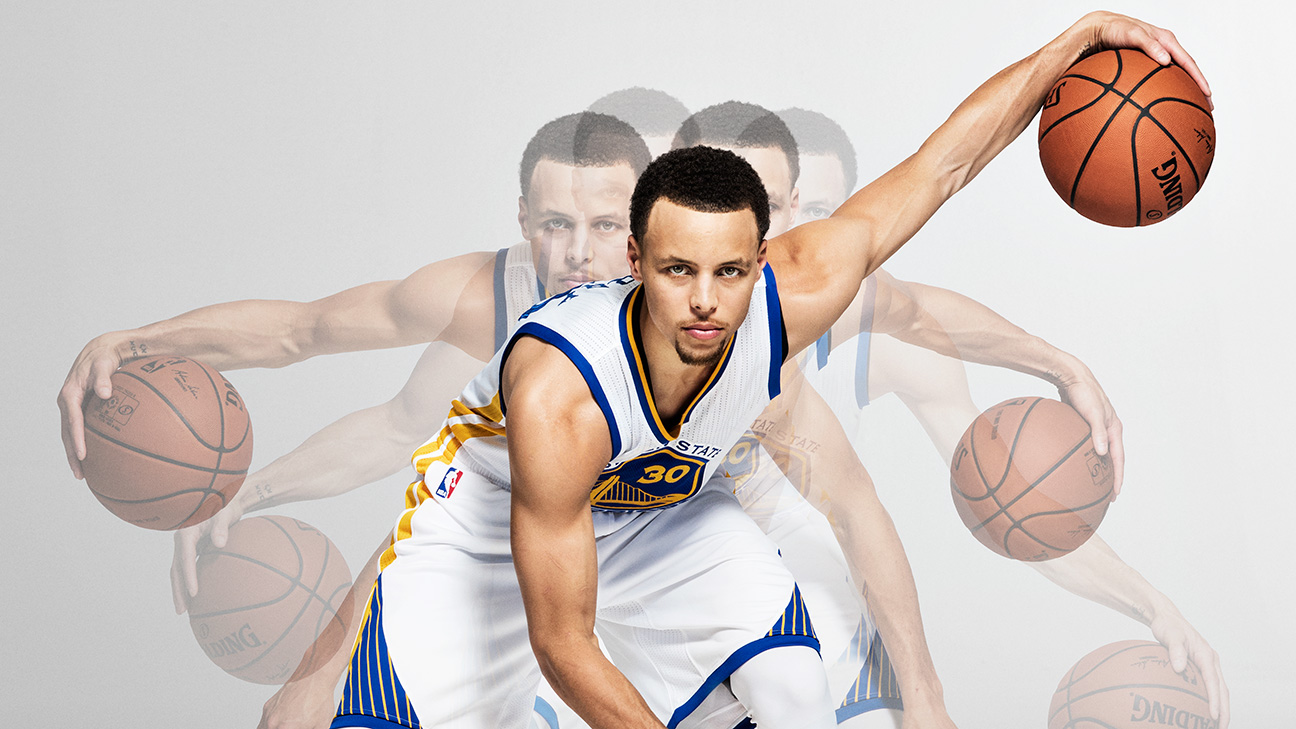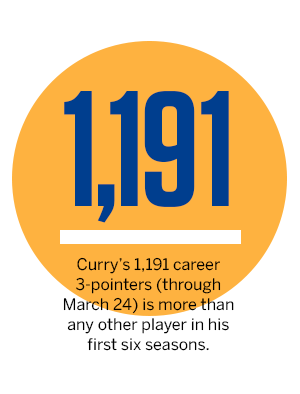DRIBBLING THROUGH THE rocks and tire tracks at Jack’s hoop honed Curry’s ballhandling skills, while the unpredictable backboard and the unforgiving rim tested his touch and inspired the perfect, impossibly high parabolic arc of his shot. But the court also polished his composure; this is where he first obtained the Tao of Point Guard. “This was a visionary place for me,” Curry says. “Make it work no matter what you have to work with — that’s something that stuck with me very early on as a point guard. Adjust. Get creative. Try a different angle, a different lane, a different move or a different shot — just make it work. Out there on my grandpa’s court, there was no better place in the world to breed that kind of creativity.”
“We call it the summer of tears. Stephen shot a lot of shots with tears in his eyes.”
– Jackie Curry, Stephen’s aunt
After all, it’s hard to get rattled by Grizzlies fans once you’ve hit 100 free throws in a row with actual underfed bears lurking just beyond the tree line.
Curry calls his dad Pops, and here, listening to Pops’ stories, is how Stephen came to understand the endless solitary work that would be required. His favorite tale was how every summer morning after Jack and Juanita left for work at the GE plant, Dell’s sisters would walk him to the back steps, place the basketball against his chest and lock him out of the house. If he was good — if, say, he didn’t interrupt any key moments of General Hospital — they’d throw him a fried-egg sandwich out the window for lunch. And then, half an hour before their parents returned, the girls would unlatch the door, dust him off, change his shirt, wipe his face with a wet dish towel and swear him to secrecy.
The eight hours or so in between? Back then, the closest sign of civilization was a Tastee Freez 10 miles away. There was nothing else for Dell to do but work on perfecting one of the most fluid, efficient and effective jump shots in NBA history — the same form that Stephen would one day mimic.
Shooting on the perpetually muddy court, Stephen learned there was only one sure way to keep the ball safe, clean and in the same area code: Make every shot. “That connection to perfection comes from my granddad and his hoop,” Stephen says. “It was ‘make it or chase it’ out there, and if you missed, it was terrible. So you didn’t miss. That instills something in you as a shooter without you even knowing it’s happening.”
Jack would study Dell’s shot from behind the lace curtains of the dining room window. Occasionally, he would growl at something he didn’t like, then crash through the screen door at the back of the house. Father and son would fuss over fundamentals, their voices carrying for miles over the Blue Ridge foothills. And then, as a universal gesture of approval and affection, Jack would stand under the rim and silently rebound for his son.
When Jack died in 1991, at 58, after a sudden heart attack, he had just sat down to watch Dell play the Lakers on TV. By the time Dell flew back to Virginia, the house was packed with mourners. He went straight to his mama, gave her a gentle peck on the cheek, then weaved through the crowd to his room and shut the door, devastated.
After a while, though, they heard it again. The faint, familiar, life-affirming noise coming from Jack’s hoop.
Boom. Boom. Boom. Ba-dink.
The basketball butterfly effect of Jack’s hoop didn’t fully hit Dell until many years later, though, when he realized he’d have to pass on the exact same lessons he learned to Stephen. As a skinny 5-8, 150-pound sophomore at Charlotte Christian School, Stephen still used a flip shot that seemed to originate from his belt buckle. It was inefficient and easy to block, and Dell knew that if Stephen had any aspirations to play at the next level, he’d have to tear it all down and rebuild his shooting mechanics from scratch.
It was a frustrating, tense few months for everyone. Stephen, who loves his craft so much that he often takes 1,000 shots before practice, says it was the only time in his life he flat-out hated shooting. The court at the Curry house in tony south Charlotte is a little different from the one in Grottoes. Here, there’s almost an entire half court of perfectly smooth concrete between the stucco-lined two-car garage, the professionally installed top-grade glass backboard and the perfectly green (lawn. Manicured crepe myrtles shade the court and prevent the ball from bouncing into the glistening pool. But the summerlong grind Stephen endured was almost identical to what his pops experienced, minus the fried-egg sandwiches. “We called it the summer of tears,” Jackie says. “Dell became Jack, Stephen became Dell, and it was Stephen who shot a lot of shots with tears in his eyes.”
They got through it. Stephen perfected his trademark fluid, low-lift, lightning-quick form and an effortless overhead swan-neck follow-through. Almost as soon as the game’s greatest shot was created, however, Stephen sensed it wasn’t going to be enough. Even though he had played point guard for only a year during his final season at tiny Davidson College, the Warriors took him with the seventh pick overall in the 2009 draft and began to rebuild around him. Three years later, there were lingering doubts about his defense, ballhandling and durability after chronic ankle problems limited him to just 23 starts in 2011-12.

